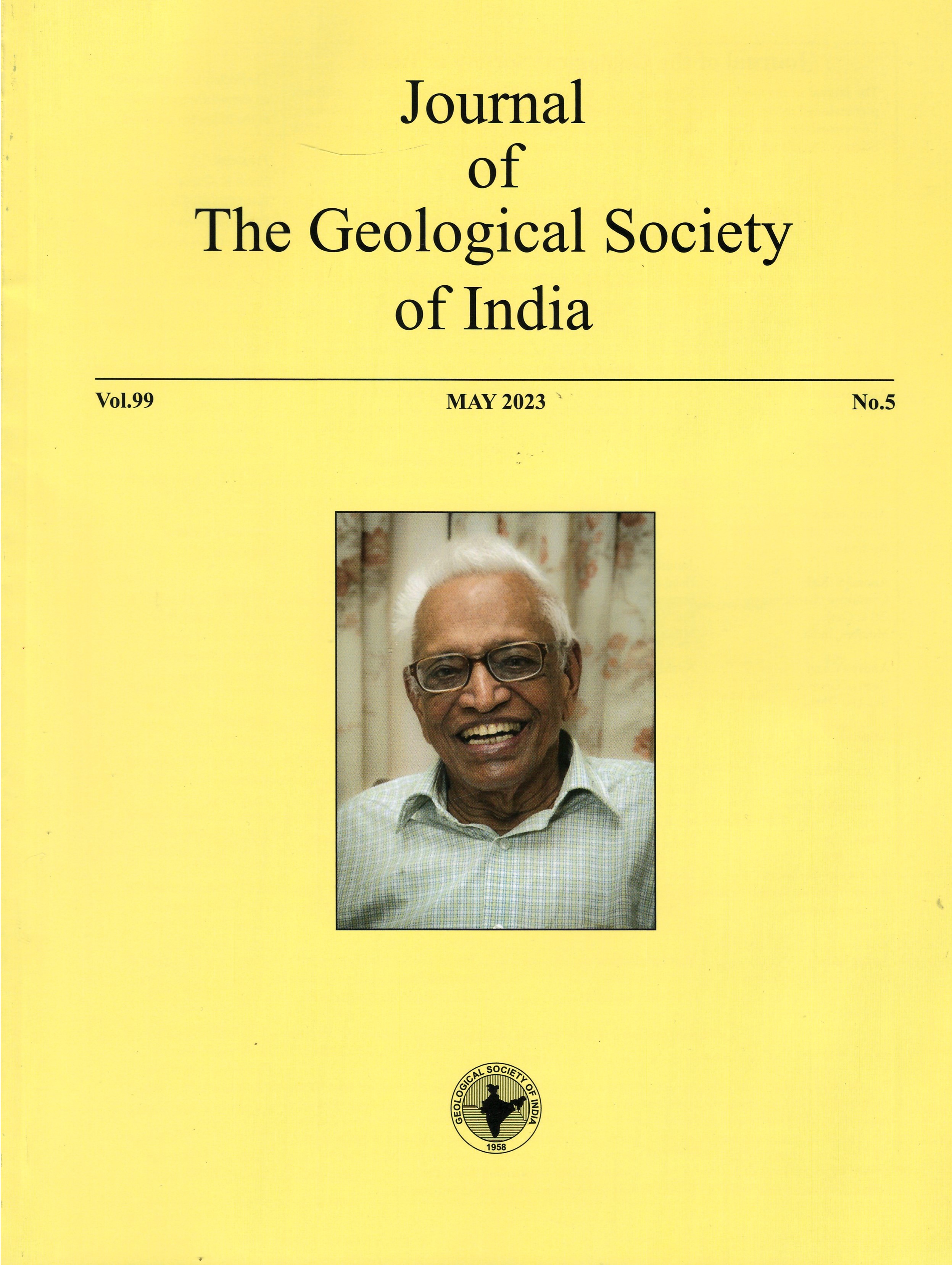Diurnal and Seasonal Variation in Morphology and Elemental Composition of Particulate Matters
DOI:
https://doi.org/10.1007/s12594-023-2367-0Keywords:
No Keywords.Abstract
In the present study, diurnal and seasonal variations of atmospheric particulate matters (PMs) were estimated in urban and rural areas of Lucknow. The monitoring of PM10 and PM2.5 was conducted at Babasaheb Bhimrao Ambedkar University (BBAU) and Mohanlalganj, Lucknow, during the winter (WNTR) and summer (SMR). The PM10 levels during the day* and night** time were found to be in the range of 192-256 (223 ± 23)*, 244-306 (268 ± 25)** and 171-193 (182 ± 7)*, 199-240 (214 ± 15)**, while PM2.5 was 117-151 (131 ± 12)*, 113-153 (135 ± 14)**, and 94-116 (107 ± 10)*, 108-125 (118 ± 6)** µg/m3 at the BBAU and Mohanlalganj locations, respectively. During night-time (NT), the mass concentration of PM10-2.5 pollutants were found to be higher than day-time (DT) at both locations. The levels of PM10-2.5 were higher during WNTR than SMR season at each location probably due to prevailing meteorological conditions. The levels of atmospheric PMs at the BBAU location were higher than at the Mohanlalganj site. The morphology and elemental compositions (ECs) of particulates revealed rod, spherical and irregular shape particles having biogenic, carbonaceous, aluminosilicates and variable components. The morphological features (MFs) of PM10-25 pollutants exhibited distinct variation during DT and NT. Both times (DT and NT) carbonaceous particles were found at BBAU, whereas calcium-rich/asbestos/cement particles were present during DT and fly ash was abundant in NT at Mohanlalganj. Fourier transform infrared (FTIR) analysis of PM10-2.5 revealed the presence of inorganics (silica, silicate, sulphate and particulate water) and organics (aliphatic/carbonyl carbons) functional groups which are geogenic and anthropogenic in origin.

 Suresh Kumar
Suresh Kumar






